Root Canal Treatment Goodlettsville
The Solution to Severe Dental Pain

When bacteria reach the interior of your tooth (called the dental pulp), it can become infected and cause quite a bit of pain. Why? Because this is where the nerve of the tooth is located! In the past, teeth with this kind of problem would just need to be removed. Thanks to advanced technology and modern techniques, Dr. McClain can save these teeth with root canal treatment in Goodlettsville. Thanks to the many advancements in dentistry, this procedure is nothing like its reputation, and it’s actually one of the best tools we have for relieving dental pain! Give our office a call or read on to learn more.
Why Choose Goodlettsville Smiles for Root Canal Treatment?
- Dental Patients Experience Fast & Effective Pain Relief
- Dentist with Proven Experience in Treated Infected Teeth
- Nitrous Oxide Available to Ensure a Comfortable Experience
Do I Need Root Canal Treatment?
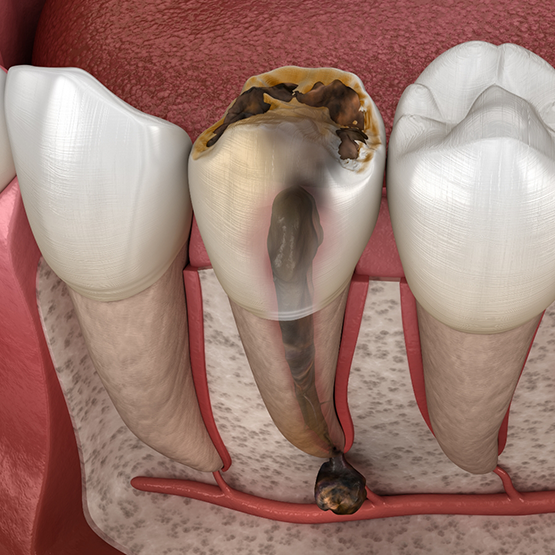
Not every toothache will require root canal treatment to relieve or treat it. This procedure is primarily performed on pearly whites that are either damaged, decayed, or even infected and can’t be treated with less invasive options (i.e., tooth-colored fillings or dental crowns). Root canal treatment may be necessary if you’re struggling with a severe toothache that’s gone for more than a day, pain when chewing, inflamed or visibly red gums, sensitivity to extreme temperatures, or a pimple-like bump on the gums near the affected tooth. Be sure to schedule an emergency appointment with your dentist as soon as possible if you notice any of these symptoms.
The Root Canal Process
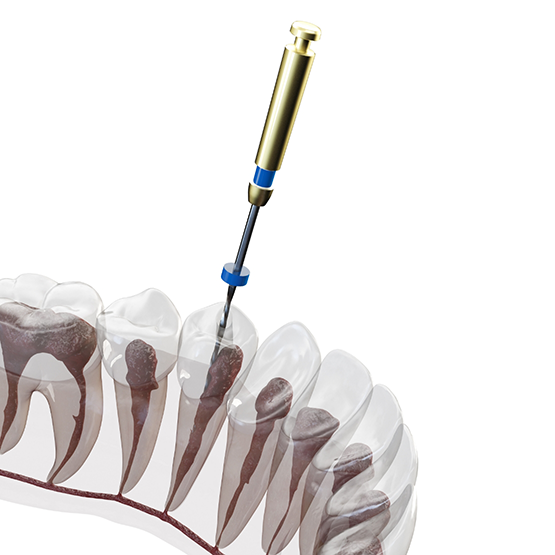
Contrary to popular belief, root canals are specifically designed to alleviate discomfort and save as much of the healthy tooth as possible. The process should also be pain-free, as our team will first completely numb your mouth with a local anesthetic before starting any work. This will ensure you remain comfortable throughout your visit. We may also provide you with nitrous oxide sedation, which can both help you relax and lower your body’s ability to register discomfort.
To begin the process, we'll take a 3D X-ray to help plan your root canal by locating each canal and measuring its length Dr. McClain will make a tiny hole in your tooth so that she can reach the pulp and remove all infected tissues from inside. She’ll then clean and disinfect the area to ensure it’s free of any harmful bacteria before filling it up with a biocompatible material. Once filled, our team will likely cover the tooth with a dental crown to protect and strengthen it.
The Benefits of Getting a Root Canal
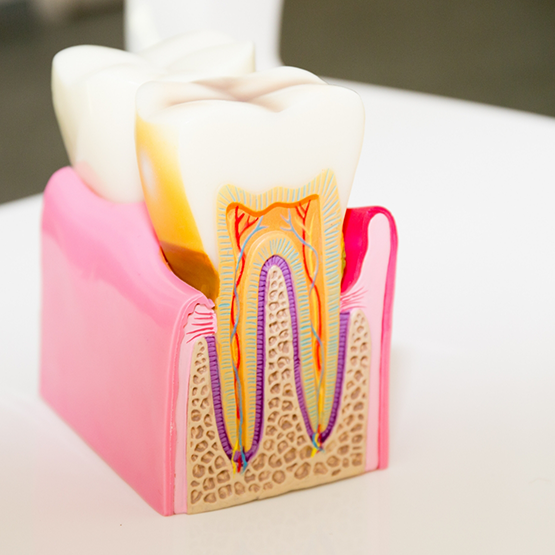
Root canal treatment is a completely safe and effective dental solution that can help avoid more serious oral health problems in the future. Most patients typically expect to appreciate a variety of benefits with this procedure, including:
- Virtually pain-free treatment: Unlike in the past, root canal treatment is painless, as the majority of patients find it no worse than getting a standard tooth filling.
- Tooth preservation: Preserving your natural tooth instead of removing it can save you both time, money, and hassle from needing to replace it.
- A healthy & pain-free smile: By cleaning out the damaged and infected particles that are causing discomfort, you’ll be able to enjoy a comfortable and healthy smile again.
Understanding the Cost of Root Canals
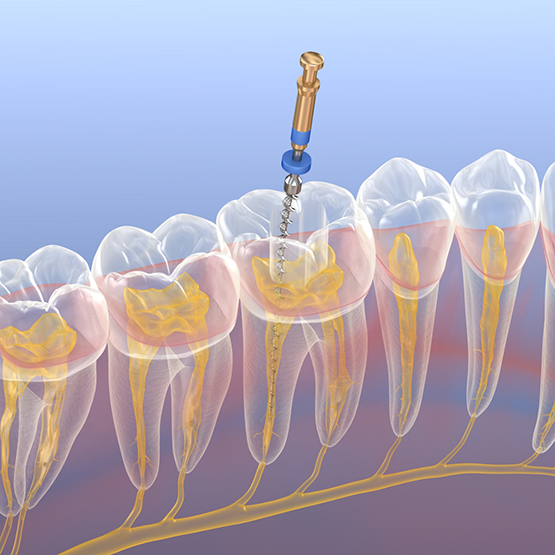
If you’re like most patients, you’re worried about two things when it comes to root canal treatment: the pain and the prices. Let us reassure you that you won’t feel any discomfort during the procedure, and we’ll do everything we can to make the cost easy to understand. In fact, we’ve dedicated this next section to the latter!
Factors That Can Affect Root Canal Cost
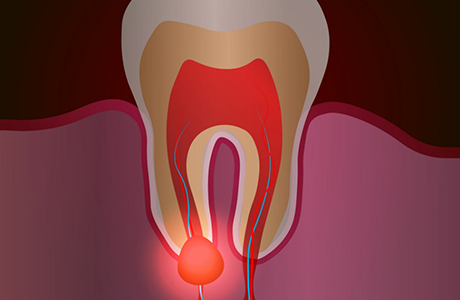
Multiple factors need to be considered to determine the cost of root canal treatment. Here are a few:
- The type of tooth being treated
- The complexity of your case
- If any additional restorative care is needed
- The restoration needed to protect your tooth
Again, our friendly and helpful team at Goodlettsville Smiles will not leave you in the dark about any aspect of your treatment, including the price. We’ll review all this information with you during your appointment and share the financial solutions available to make the cost as affordable as possible.
Is it Cheaper to Pull My Tooth?
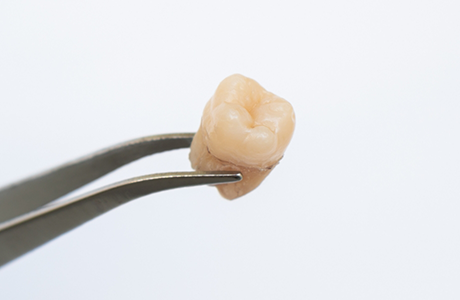
Since root canals continue to be a feared procedure, it’s common for patients to want to explore other treatment options, like a tooth extraction. At first, it might seem like this alternative is more cost-effective, but it usually isn’t because the price of the dental bridge, denture, or dental implant to fill the gap in your smile moving forward is separate. Plus, we only want to remove your tooth as a last resort.
Does Dental Insurance Cover Root Canal Treatment?

Although dental insurance primarily focuses on preventive care, it usually covers a portion of the cost of essential restorative dentistry as well, including root canal treatment. So, it’s definitely worth taking the time to familiarize yourself with your benefits. If you need any help, you’re more than welcome to reach out to us too! We have extensive experience with dental insurance providers, and we are even in-network with Delta Dental, MetLife, and several others.
Other Options for Making Root Canal Treatment Affordable

If you don’t have dental insurance, don’t worry – that’s not the only way to make the cost of root canal treatment more affordable. At our Goodlettsville dental office, we also welcome flexible financing with Cherry, which prevents you from having to pay for the entire price upfront. Instead, you can choose a payment plan that works with your monthly budget so you can space out the cost into smaller, more manageable monthly chunks. We also offer periodic specials, which can help reduce your out-of-pocket expenses as well!
Root Canal FAQs
How Long Does It Take to Recover from a Root Canal?
While everyone bounces back a little bit differently, most patients will be able to go back to work as soon as the day after their procedure. You might be a little bit tender for a few days, but if you take either prescribed or OTC pain medicine as directed you should feel comfortable enough to go back to normal.
The only exception is if your work involves heavy physical labor. Exercise can potentially draw blood flow away from the mouth and delay healing, so it’s a good idea to get some rest for a few days after the procedure. That being the case, you may want to take the next two or three days off work.
Can I Eat Before a Root Canal?
Eating isn’t inherently a problem when it comes to root canal treatment, so in many cases, you should be able to eat beforehand. This can even be ideal, as your mouth will likely still be numb after the procedure is complete and will make it difficult to eat.
However, if you’re being sedated for the procedure, you may need to fast for a few hours to reduce your risk of nausea after the procedure. You should also abstain from drinking alcohol for 24 hours beforehand, as it may interfere with the anesthetic used for the treatment.
Do I Need Antibiotics Before or After My Root Canal?
Typically, it isn’t necessary to take an antibiotic before or after your root canal treatment. This is only recommended in circumstances where the patient is unusually susceptible to infection—in these cases, extra precautions may need to be taken to ensure that the bacteria in the tooth does not spread. If this is the case, we will be sure to discuss the matter with you while reviewing your medical history.
What Happens If You Wait Too Long for a Root Canal?
The body fights infections with white blood cells that travel through the bloodstream. Unfortunately, however, they’re unable to reach the interior of the teeth via this method. That means that toothaches caused by infection won’t fade on their own.
If you don’t treat this kind of tooth with a root canal, the problem will only get worse. Eventually, the bacteria may destroy the root of the tooth and spread elsewhere in the mouth. For this reason, it’s critically important that you get a root canal when we recommend that you need one.

